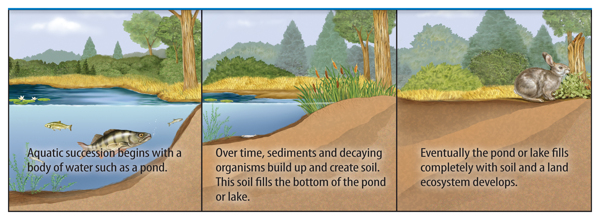Temperate Grassland Animals Food Web

An accumulation of the most truly effective Temperate Grassland Animals Food Web wallpapers and backgrounds available for download for free. We hope you enjoy our growing assortment of HD images to utilize as a background or home screen for the smartphone or computer. Please contact us if you want to publish a wonderful picture on our site. Only the best wallpapers. Everyday additions of new, brilliant, HD wallpapers for pc and phones.
A ton of brilliant Temperate Grassland Animals Food Web wallpapers to be able to down load regarding free. It is also possible to publish along with promote your favorite wallpapers. HD wallpapers and also historical past graphics

Amazon Tropical Rainforest Food Web Education

Pin by Andersen on Ecological Succession Primary

Biomes

Temperate grassland animals food web
Also in this picture an elephant is eating plants.another animal in this food web is a hyena eating a zebra. All food chains begin with a producer, an organism that can make its own food e.g. Home biotic/abiotic factors food chain/web energy pyramid symbiosis matter succession human interactions fun facts food chain. This is a food web of animals eating other animals like a cheetah eating a zebra. After that the secondary consumers, wolf and hawk, eat the primary consumers, the prairie dog, elk, and bison. Tertiary consumer foxes eats mice, prairie dogs, ostriches, and buffalo. Secondary consumer secondary consumer ostriches also eat mice and Secondary consumers play a big role in the fluctuations of the temperate grassland biome. The aardvark eats the termites and the flowers. It is one the rarest and africa’s endangered carnivore. This is an example of one of the many food webs that may be witnessed in a grassalnd, and it includeds the producers (grasses, whattle tree), the herbivores who are primary consumers (kangaroos, wombats), the carnivores and omnivores that make up the secondary consumers (magpie,emu), and the carnivores of the tertiary consumers (dingo). Grasslands animals can be found in all the continents except antarctica. Primary producer, primary consumer, secondary consumer, and tietiary consumer Here is a very brief list of characteristics and introduction of grassland animals. The sun is what made the blue gamma grass grow and theres a little bit of the blue gamma grass in everything in the food web.
Temperatures vary with seasons with tornadoes, blizzards, and fires occurring in many temperate grassland regions. If a type of grass, not native to the temperate grasslands, was growing around native grasses, the invasive grass could harm or kill the native grass and the the animals that eat the native grass. On the other hand, also are animals characteristic of those prairies the american badger, the lined firedamp and coyote. In a grassland, the producers include grass, shrubs and trees, which are designated as plants that make their own food, also called autotrophs. A food chain shows what each organism eats. The fauna of the prairie plays a fundamental role in the preservation of the natural balance for the food web. Temperate grasslands can be found in various regions north and south of the equator including argentina, australia, and central north america. The ostrich eats mice, grass and plants. Temperate grasslands have hot summer and cold winters. What is a producer food webs diy food cool diy food chains diagram teaching web project summer school. This is an example of a food chain that is found in the temperate grasslands. Welcome to the grassland food webs learning object. The zebra eats only grass and plants, as well as the giraffe, bison and the gazelle. Animals that live in temperate grasslands must adjust to dry terrain in which just 10 to 30 inches of rain falls per year, making temperate grasslands less diverse than the wetter savanna grasslands. The arrows going into the animals mouth is where that animal is getting it's energy from.
Most animals, which live in the temperate grasslands, are reptiles, birds, and grazing mammals. Then the primary consumers, prairie dog, elk, bison, eat the grass. Grasslands are large expanses of land filled with grass. The temperate grassland is distinguished from other biomes in four different characteristics. The fluctuations in the numbers. If the secondary consumers are gone then the predator of those organisms would have a hard time surviving, since they rely on those organisms for food, and if there is no secondary consumer then. The source of energy in this food web is the sun. These aren't the only species of animals found in a grassland, but this example gives you an idea of what the food chain might look like. Some animals that inhabit temperate grasslands in north america are bison, antelope, birds, gophers, prairie dogs, coyotes, and insects. Temperate grassland food web top consumer eats all secondary consumers. On the steppes you’ll find similar animals to the great plains including lynx, antelopes, falcons, and fox. The japanese climbing fern affects trees and shrubs in the temperate grassland. This is one endangered species int the grassland biome. The amount of rainfall however determines the height of grasses in the grassland. A food web gives a better overall idea of how organisms interact in an ecosystem.
The food chain in a grassland is producers, primary consumers, secondary consumers, scavengers and detrivores. There are two types of grassland, temperate and tropical. The producer is grass because almost every animal here would not survive if there wasn't grass. And the grass and flowers get their energy from photosynthesis, which they use to create their own food. The fluctuations in the food web can be very harmful to the organisms within the food web. Food webs consist of a number of interlinking food chains within an ecosystem. The mouse eats the plants and the termites. In the asian prairies is the antelope saiga, that also frequents steppes. Temperate grassland food web decomposers explain what would happen if all the primary consumers became extinct. Temperate grasslands are areas of open grassland with very few trees. An example of commensalism in the temperate grassland is when large nurseplants provide protection for young seedlings growing under the leaves of the nurse plant. It is distinguished by it’s long, narrow neck and red, white fur. Plants in the chaparral must be adapted to irregular rainfall, drought and fire. They have a flat skull. The main source of energy in this food web would be the sun.
Food web in this food web all the organisms originally get their energy from the plants except the plants who get their energy from the sun and pass it on as they get eaten. Rain usually falls in temperate grasslands in the late spring and early summer. The plants, which dominate the temperate grasslands, are shrubland, shrubs, trees and grasses. If a certain population increased or decreased that would mean more or less food for the other species that either eat that species or eat what it eats. Temperate grasslands are home to many large and small herbivores. The temperate grassland does not have much animal diversity, especially compared to the savannah. Entered the temperate grassland biome, it could lead to devastating effects on the native organisms of the environment. An example of parasitism in the temperate grassland is when a rattle lives on the roots of grasses and gains energy from feeding on the flow of nutrients and water through the roots. The biome we are researching is temperate grassland. Common producers in the california chaparral include the blue oak, the coyote brush and the fairy duster. In this food web the energy starts with the producer, the buffalo grass. Describe what would happen if all the decomposers became extinct. For example, the blue oak, which is native to california, has an extensive root system and a waxy coating on its leaves. If all the decomposers of the food web i put together were to Five species exist, and and all have declined as a result of human settlement on their range.
Related post:


Temperate grassland NGP_Hargreaves.jpg (1280×853

food chain of deciduous forest Food Web in the Temperate

Temperate Deciduous Forest Biomes, Temperate deciduous

Pinterest • The world’s catalog of ideas

African Savannah Food Web Activity Savanna ecosystem

Food Chain and Food Web Biome Card Sort Bundle Food

Biome Diorama Grasslands Habitats projects, Ecosystems

Grassland biome for 3rd grade School Projects

Biome Diorama Grasslands Habitats projects, Ecosystems

Food Chain and Food Web Temperate Grassland Card Sort

Food Chain and Food Web Temperate Forest Card Sort

Food web, Ecosystems, Biomes

Food Chain and Food Web Temperate Grassland Card Sort

Pinterest • The world’s catalog of ideas

Food Chain and Food Web Desert Food Card Sort Food

Food Chain and Food Web Biome Card Sort Bundle Food

Food Chain and Food Web Arctic Card Sort Food webs

Pudacuo National Park Energy Pyramid Energy pyramid
That's all about Temperate Grassland Animals Food Web, Five species exist, and and all have declined as a result of human settlement on their range. If all the decomposers of the food web i put together were to For example, the blue oak, which is native to california, has an extensive root system and a waxy coating on its leaves. Describe what would happen if all the decomposers became extinct. In this food web the energy starts with the producer, the buffalo grass. Common producers in the california chaparral include the blue oak, the coyote brush and the fairy duster.



